Last Updated on May 28, 2023 by Ellen
The Sumidero Canyon is something to see in Chiapas. It’s beautiful, and as early retirement budget travelers, we found this excursion can be a short, cheap trip.
We took a colectivo (shared taxi van) from Tuxtla Gutiérrez to the village of Chiapa de Corzo. The colectivo cost about 90 cents US each. Tip: wait for a colectivo that looks more like a van instead of a minibus. Those will stop less and get you there faster. Also, vans with closed windows are air conditioned. Get the colectivos anywhere around the market or the transportation hub by Mariachi Park.
It’s about a 20 minute ride to Chiapa de Corzo. Behind the main square and the main church, a side road leads to the boat docks where different companies offer tours to down the river to the dam.
We went with Lanchas Rojas. Our boat held about 24 people; we were the only gringos. It cost 400 pesos for two people, or about $11.55 USD each. In the U.S., you probably couldn’t do this kind of tour for ten times that amount. We had the front row seats, which I highly recommend if you can at all manage it. (On the return ride, we offered our seats to Mexican tourists, but no one wanted to switch.)
Unfortunately, life vests are a must-do. I hate them. I try not to wear them whenever possible, but there are park guards that patrol the river and check to make sure tourists are wearing life vests. Our boat captain explained this to us before we left, but I only half-listened. Sure enough, we were stopped by a patrol.
Tedly was told to fasten his – he was wearing it unclipped due to taking his camera off for a selfie (above). Luckily, we were both physically wearing them when our boat was checked, so we didn’t cause our captain any trouble with the park guards.
With the budget and logistics covered, let’s move on to what you will actually see on the tour.
The beautiful canyon
The canyon rivals the Grand Canyon in age – some 35 million years. The cliffs can be as high as nearly 3,300 feet, though most of them are shorter. Various vegetation grow on most of the cliffs.
The Grijalva River started carving out the canyon some 35 million of years ago. Today the river runs through the canyon to the reservoir of the largest hydroelectric dam in Mexico – and the tallest dam in North America. The dam produces 30 percent of the electricity in Mexico.
On our trip, we saw a crocodile, a monkey, many birds and some jumping fish. Waterfalls. Rock changed to shades of pink (once you got close enough to notice) from various minerals. Giant cliffs. Jagged rock. Lush jungle. It was all beautiful.
Here are some photographs in a short slideshow. It’s representative of the wonderful sights you can witness on this awesome ride down the river, up until the part called El Tapon, or The Plug.
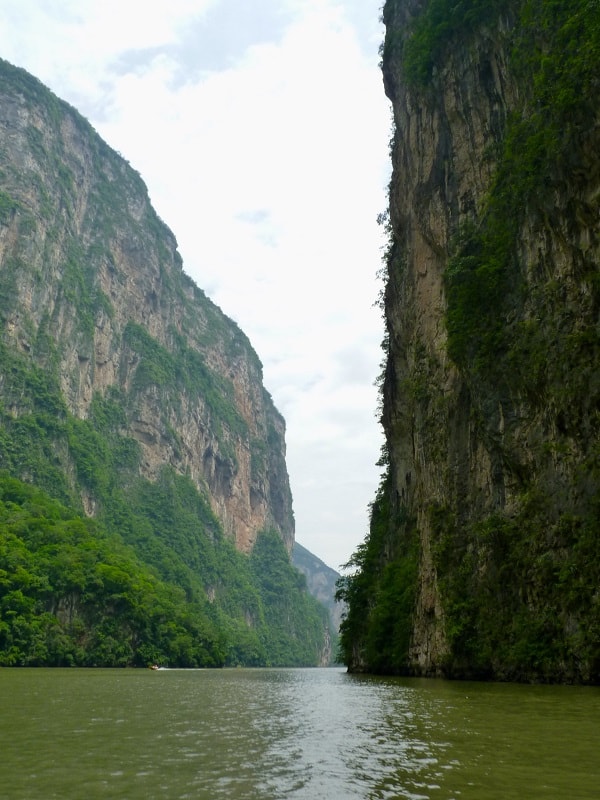
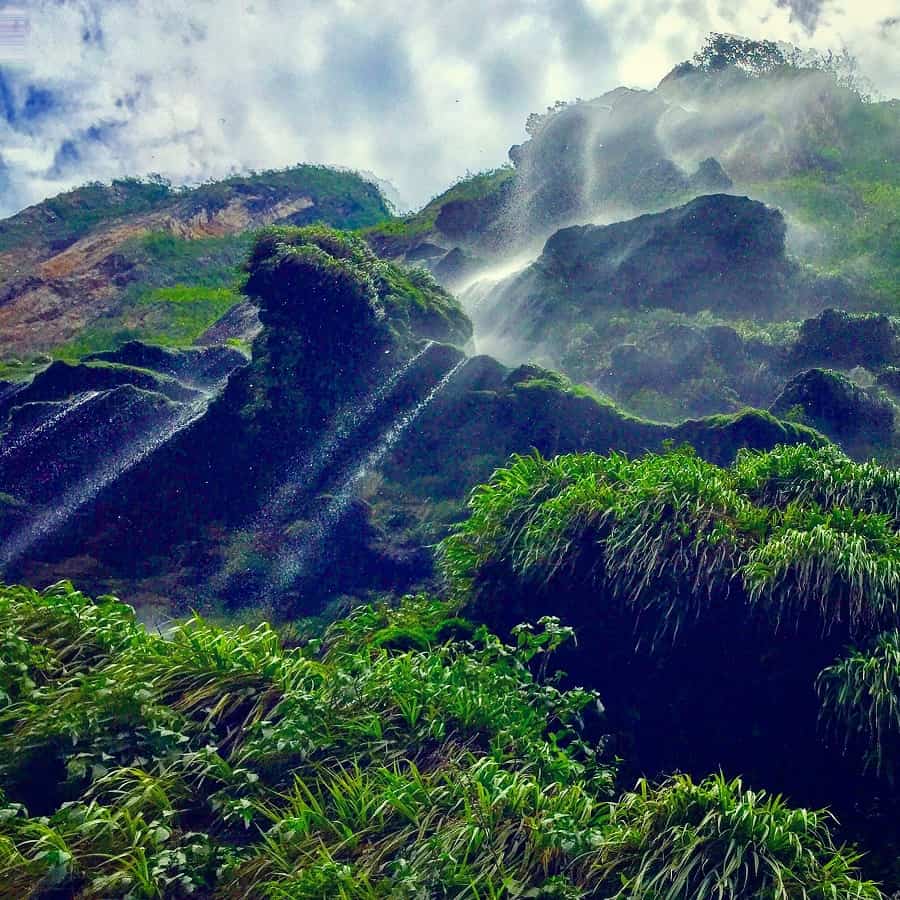
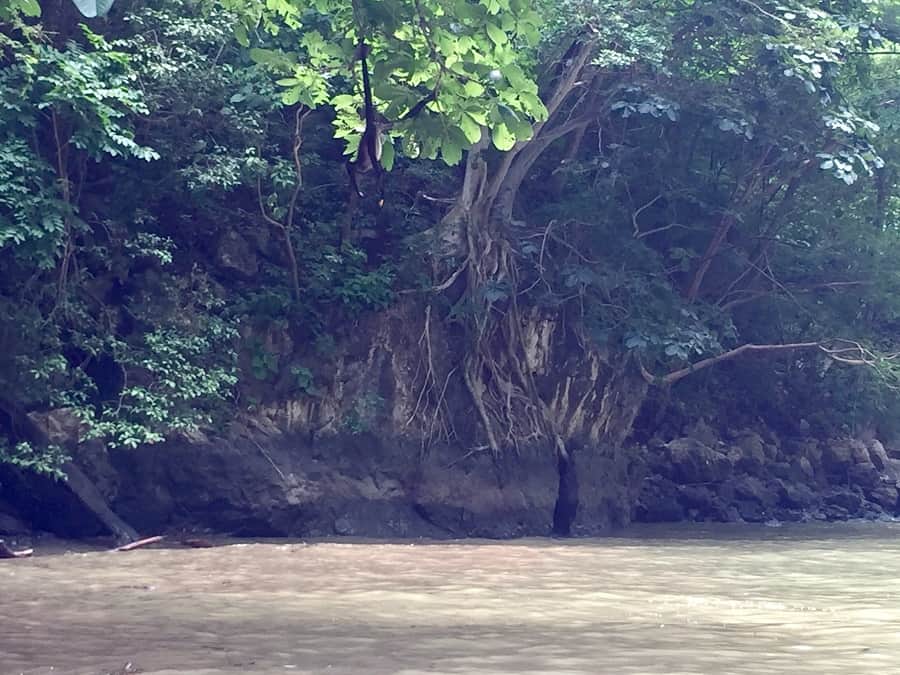
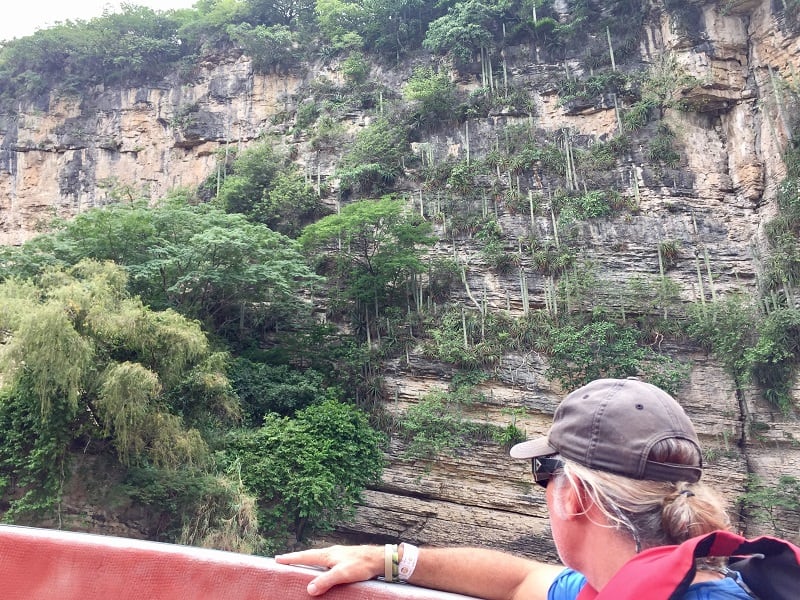
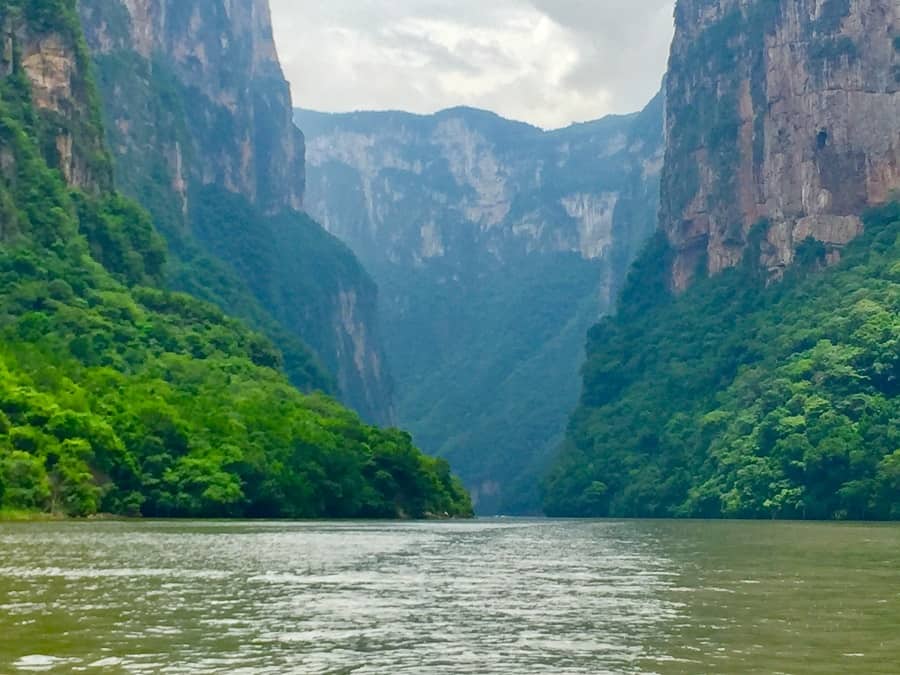
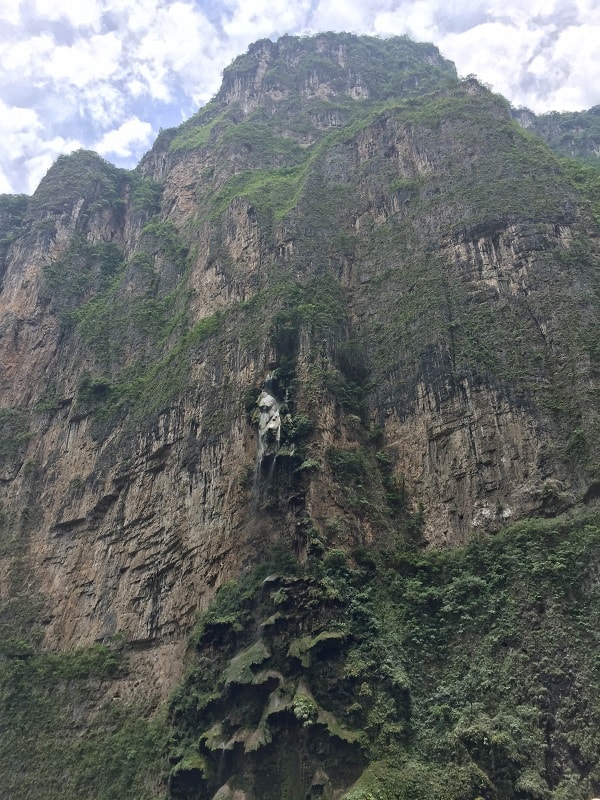
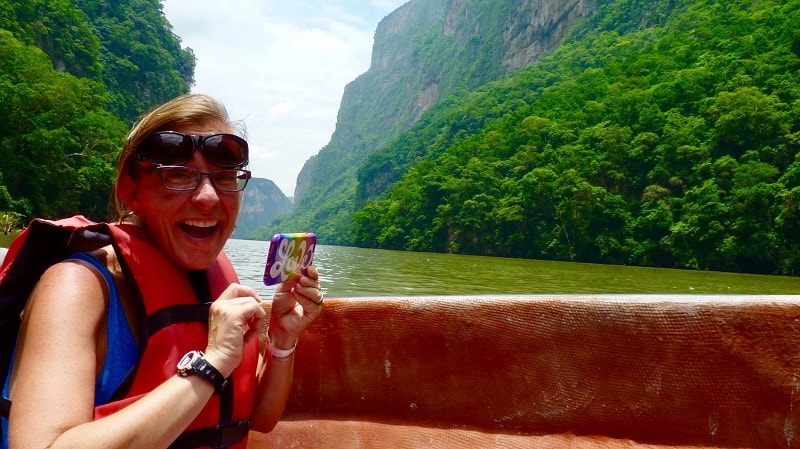
It’s awesome, even breath-taking in some spots. My pictures don’t do it justice.
And then… and then we got to a part stained by humans.
The ugly secret
Before the dam reservoir, the spot known as The Plug is where the water flow traps logs from deforestation, and plastic trash. Bugs are everywhere in this stinky pile.
It’s difficult to see in the iPhone images, but there were workers out there in other boats trying to clean up the mess. Some boats pull in the logs. Others use giant plastic bags for the plastic trash. Below is a still shot of one boat of several out working the day we went on this tour.
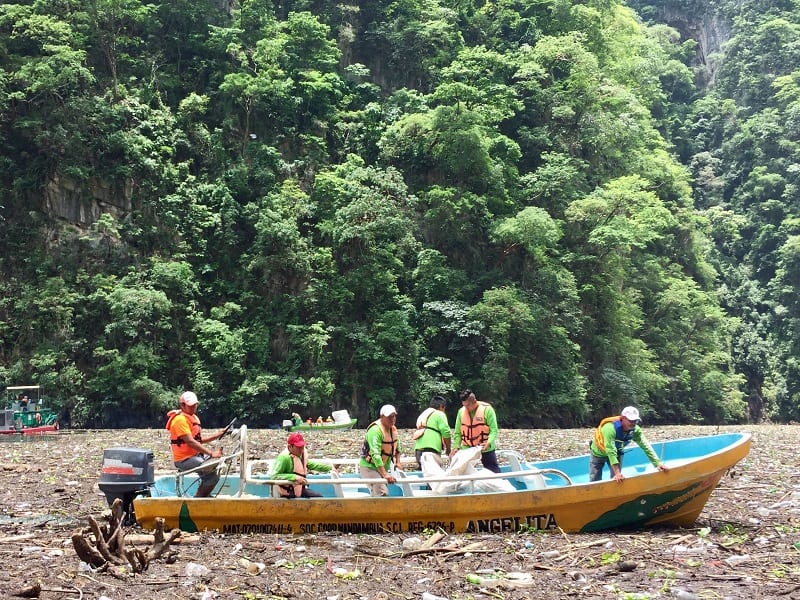
But it turns out: the obvious plastic trash isn’t even the worst of this mess.
I know Wikipedia has its issues. Nonetheless, I’ve found that site has a good overview of the pollution problem on the river in the Sumidero Canyon, and plastic is just the surface of the issue.
The most obvious pollution is garbage, especially plastic containers, which mostly comes from area homes and businesses tossed onto the ground or in streams, especially from Chiapa de Corzo and Tuxtla Gutiérrez due to the lack of environmental awareness according to Conanp.[14][15] The quantity of this trash reaches its height during the rainy season, when runoff and swollen streams can carry more of it into the Grijalva.[6] While bottles and other plastic are what the casual visitor generally notices, other indicators include the overgrowth of water lilies (due to high levels of fecal matter) and dead animals.[12][15] However, this accounts for only about five percent of the total tonnage of waste that comes into the river each year.[11][16] Somewhere between 80 and 90% of the waste solids found in the river is branches, wood, rocks, sediment and other debris from legal and illegal logging, which cause deforestation .[11][14][16][17] These mostly come into the river during the rainy season, especially from the Villa Flores and Villa Corzo municipalities.[13] Only a small part of the solid waste is visible on the surface of the water, most is hidden underneath.[16][18]
Yea. Like that.
My ugly epiphany
Before we came to Tuxtla, we stayed a month in San Cristobal. There, we met some really interesting younger Americans who are digital nomads. Millennials. One of them made the following statement, and it’s been rattling around on my brain ever since: It can’t be saved.
We were talking about the state of the affairs in the U.S., and in the world. How things are. I don’t think he’s a fatalist, but a realist.
You see, I’ve been holding out hope that some great inventor is going to come along and make a substance to replace plastic. With this statement, “It can’t be saved,” on my mind, when I saw this pile of shit on the Grijalve River, here was all I could think. Nope, it can’t be saved. There are too many of us.
Make no mistake – it’s not only Mexico. It’s all over Earth. Americans don’t see this because it’s a wealthier country with more money for (supposedly) better infrastructure. And, pre-Trump, we had decent government regulations on industry from offices such as the Environmental Protection Agency. Post-Trump, maybe Americans will see more crap like this in the future.
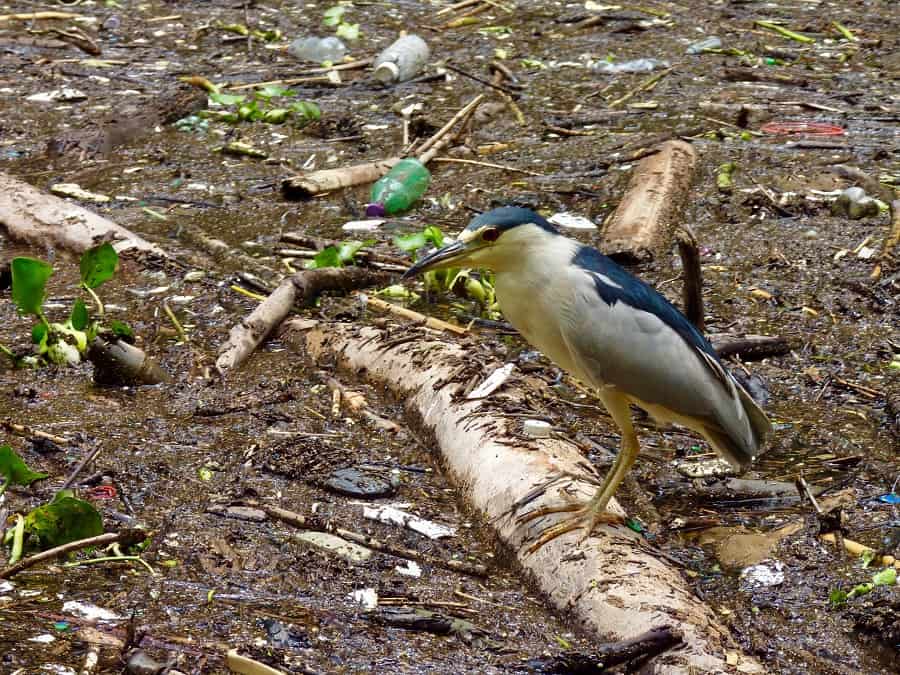
Tedly offered some comfort when I wanted to talk about the devastating realization I had. He said he’s always known the future for humans is grim. He believes it’s most likely we are saved if we start colonizing other planets, and he has simply resolved himself to enjoy the remaining time he has left here on this planet. This is as philosophical as my spouse usually gets.
Yea. Kinda heavy for a blog post about early retirement budget travel to a canyon river tour in southern Chiapas. Didn’t mean to bum you out, dear reader. But if I don’t show you what’s really out here, who will?
After the tour
The town of Chiapa de Corzo has a pleasant vibe. There are several restaurants along the waterfront by the docks. We picked one and had cold drinks and an order of guacamole while we listened to nearby marimba bands playing in other restaurants.
As usual, vendors came along offering goods for sale. It’s always the kids that get me. Initially Tedly said no to this girl, but I called her back. I had a dollar burning a hole in my pocket for her. Two more thread bracelets that we clearly do not need.
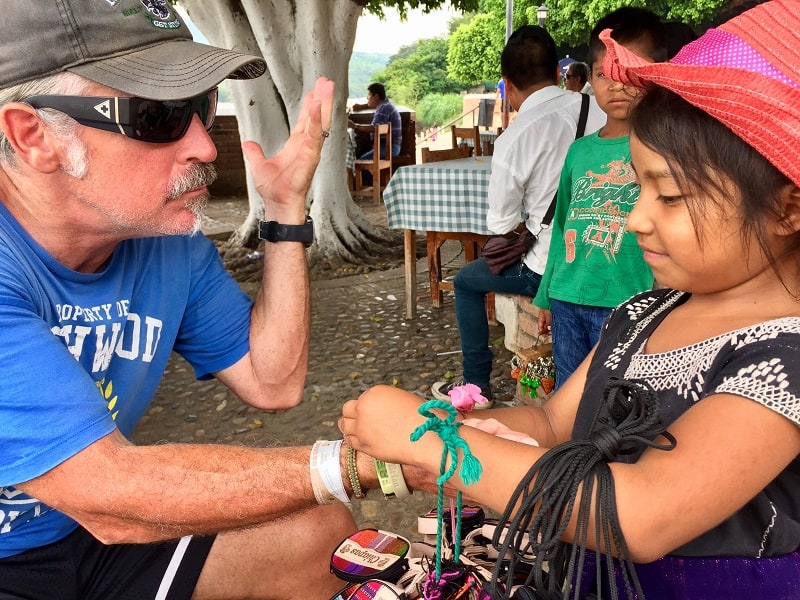
After haggling, bracelet tying, and snacking, we walked from the water front back to the main square to observe a bit before boarding an air-conditioned colectivo back to Tuxtla.
The main square has a small bell tower and a wishing well under a dome. It’s a meeting place like so many town squares across the world. With so many people.
:-/

It’s so heartbreaking to see it and think about it. We should really take better care of our planet. But is it too late? and are enough people willing to change a bit for the environment? You got me thinking about it when I read “Nope. It can’t be saved.”
But… a beautiful bird entwined in that mess! ?
Glad you wore you’re life vests…you’re pictures are beautiful! Pollution…very sad ?
It’s a national shame that the Sumidero is so polluted! But like you say, this is world wide problem, from deforestation to the islands of garbage floating in the oceans. Even the space around the planet is full of garbage!!